Bert Shepard: The Washington Senators' "One Legged War Hero"
U.S. Army Air Corps Lt. Bert Shepard wasn’t scheduled to fly on May 21, 1944 – he was the manager of his camp’s baseball team, and they had a game that day. But, as he explained later, “I said, ‘Hell, I can be back in time for the game.’”[1] And so, he took off in his P-38 fighter and headed east from his base in England.
After shooting up several ground targets outside of Berlin, the 23-year-old pilot heard radio reports about enemy fire. Flying low, he suddenly felt what seemed “like a sledgehammer” hitting is right foot.[2] He radioed for help, telling the line that he could, “feel my foot coming loose at the boot.”[3] Then he lost consciousness. His plane went down in a patch of farmland near Ludwigslust, between Berlin and Hamburg.
Two weeks later, Shepard woke up in a German prisoner of war camp, with his right leg amputated below the knee. It’s a wonder he was alive at all. Not only had he survived a crash, but he had been pulled from the wreckage by a Luftwaffe doctor who had chased off some angry German civilians intent on revenge. (During the war, Germans had been fed Nazi propaganda accusing American pilots of targeting civilians during their runs. It was a charge which, according to Shepard, wasn’t entirely false.)[4]
Now missing a leg, it appeared that Shepard’s once-promising baseball career had come to an end. That was a shame. The native Indiana Hoosier wasn’t just a play-for-fun military camp player. He was a promising southpaw pitcher who had been drafted by the Chicago White Sox prior to the war. But a man couldn’t play professional baseball on one leg.
Or could he?
Over the next several months, Shepard was moved between several camps. When he got to Meiningen, Stalag 9-C, a fellow prisoner – Canadian medic Don Erry – fashioned a crude prosthesis out of scrap metal. Shepard began throwing again and found that he could move around surprisingly well.
In February 1945, the young pitcher was one of those sent back the U.S. in a prisoner exchange. Once back in the U.S., he came to Washington where he was fitted with a proper artificial leg at Walter Reed Army Hospital. While there, Shepard and other former POWs met with Robert Patterson, the undersecretary of war.
According to a Los Angeles Times, which interviewed Shepard years later:
Patterson asked Shepard what he wanted to do with his life.
“I'd like to play professional baseball,” Shepard said.
“You can't do it with a leg off, can you?” Patterson asked.
“I think I can,” Shepard answered.[5]
Patterson then called Clark Griffith, owner of the Washington Senators. As Shepard recalled, “Mr. Griffith was not going to say no to the undersecretary of war.”[6]
A few days later the war hero was in uniform – a baseball uniform – at the Senators’ war time spring training camp in College Park. As he told reporters who flocked to talk to him, “This is the thing I dreamed about in that prison camp for months—the day I could get back on a diamond…. You know, I’d like nothing better than to play baseball all summer and bomb Japs all winter.”[7]
The young lieutenant impressed his teammates, according to the Washington Post:
“Dutch Leonard, Al Evans, Roger Wolff and the others gathered around and talked baseball with him while inwardly they pitied him. Shepard soon proved that it was a baseball job and not sympathy he sought. He amazed Manager Bluege and the payers with his smooth throwing motion and his ability to meet the ball squared at bat.”[8]
He passed even the most difficult test, given his handicap – proving that he could field his position and throw out runners trying to bunt.
Area theaters like the Trans Lux and Earle (now Warner Theater) showed clips of Shepard in action as he became a national story. However, while willing to let him try out, the Senators were slow to offer Shepard a contract as a player. Griffith preferred to bring him on as a coach. Intent on playing, Shepard began to entertain overtures from other teams, including the New York Yankees.
“I want a job in baseball. So far no one around the Washington club has talked business. If Mr. MacPhail wants me, I’ll go with the Yankees.”[9]
Griffith came to the bargaining table and the Senators extended a contract offer. The team and Shepard agreed that he would start as a coach but would have every opportunity to earn a spot on the 25 man roster. Griffith was effusive when he announced the signing:
“We certainly welcome Lieutenant Shepard to the club. This boy is a symbol of the courage of American youths. The same spirit that carried him into combat with our enemies is with him in baseball. He believes in himself and we believe in him.”[10]
While Shepard's signing was celebrated by many, and certainly was a feel-good story for a nation at war, it highlighted stark inequalities at home. In 1945, Major League Baseball was still an all-white sport. As acclaimed sportswriter Sam Lacy argued in the Baltimore Afro American a few days after the announcement, the fact that “a one legged vet, a one armed player and all forms of material for major leagues are welcomed for tryouts while Negroes, including those in excellent shape for the big leagues, are given the old run around“ was a slap in the face to African Americans.[11]
It took a few months, but Bert Shepard earned a spot on the Senators' active roster. On August 4 – two days before the bombing of Hiroshima – the man that newspapers called the “one legged war hero” made history when he took the mound at Griffith Stadium. Entering a lopsided game that the Senators trailed to the Boston Red Sox, Shepard pitched 5.1 innings. He gave up only one run on three hits and struck out two batters.
Despite the strong performance, Shepard would not see any more action the rest of the season. That offseason he underwent the first of what turned out to be several additional surgeries on his leg and he never made it back to the majors. By 1949, he had retired from baseball and went to work selling typewriters for IBM.
Even as he achieved his goal of playing baseball, one question always nagged Bert Shepard. Who was the Luftwaffe doctor who had pulled him from the wreckage and saved his life?
Amazingly, he would find out decades after the crash. In the fall of 1992, Shepard – then living in California – received a phone call from a Brit named Jamie Brundell. Brundell had recently been on a hunting trip in Hungary and met a doctor named Ladislaus Loidl. In the course of sharing stories from the war Loidl wondered aloud what had happened to the American pilot he had rescued in 1944 near Ludwigslust – a man named Shepard.
Brundell did some research and tracked down Bert Shepard. Later, Loidl wrote to Shephard himself and explained the circumstances of the rescue: “I was ordered to the place where an American airplane had been shot down by an anti-aircraft unit in order to rescue the pilot. As it later came out, it was you, Mr. Shepard…. I had to hold back the farmers at gunpoint until you were placed in the ambulance.”[12]
The following spring, 49 years to the day when Shepard’s plane was shot down, the baseball player and his rescuer met at Loidl’s home in Austria. “I prayed for this,” said Shepard. “And, after half a century my dream has incredibly come true.”[13]
You might say it was the second time Shepard saw his dreams come true.
Footnotes
- ^ Dufresne, Chris. “Shot Down in the Prime of Life : Bert Shepard, Who Pitched One Major League Game With One Leg, Searched for Years to Find Out Who Saved His Life.” Los Angeles Times, October 6, 1995. http://articles.latimes.com/1995-10-06/sports/sp-53972_1_bert-shepard.
- ^ Dufresne, Chris. “Shot Down in the Prime of Life : Bert Shepard, Who Pitched One Major League Game With One Leg, Searched for Years to Find Out Who Saved His Life.” Los Angeles Times, October 6, 1995. http://articles.latimes.com/1995-10-06/sports/sp-53972_1_bert-shepard.
- ^ Jaffe, Michael. “At Long Last, Thank You!” SI.com. Accessed January 5, 2018. http://www.si.com/vault/1993/06/28/128855/at-long-last-thank-you-ex-major-leaguer-bert-shepard-finally-met-the-enemy-who-saved-his-life-in-44.
- ^ Dufresne, Chris. “Shot Down in the Prime of Life : Bert Shepard, Who Pitched One Major League Game With One Leg, Searched for Years to Find Out Who Saved His Life.” Los Angeles Times, October 6, 1995. http://articles.latimes.com/1995-10-06/sports/sp-53972_1_bert-shepard.
- ^ Dufresne, Chris. “Shot Down in the Prime of Life : Bert Shepard, Who Pitched One Major League Game With One Leg, Searched for Years to Find Out Who Saved His Life.” Los Angeles Times, October 6, 1995. http://articles.latimes.com/1995-10-06/sports/sp-53972_1_bert-shepard.
- ^ Dufresne, Chris. “Shot Down in the Prime of Life : Bert Shepard, Who Pitched One Major League Game With One Leg, Searched for Years to Find Out Who Saved His Life.” Los Angeles Times, October 6, 1995. http://articles.latimes.com/1995-10-06/sports/sp-53972_1_bert-shepard.
- ^ Haight, Walter. “President Roosevelt Again Gives Baseball ‘Green Light’: Lieut. Bert Shepard, Prisoner Of War, Amazes Onlookers.” The Washington Post (1923-1954); Washington, D.C. March 14, 1945, sec. SPORTS.
- ^ Haight, Walter. “Veteran Joins Club As Coach to Prepare For Job as Regular.” The Washington Post (1923-1954); Washington, D.C. March 30, 1945, sec. Sports.
- ^ “MacPhail Accused of ‘Piracy’: Shepard, Hero Pitcher, Works With Yankees; Griffith Raves.” The Washington Post (1923-1954); Washington, D.C. March 19, 1945.
- ^ Haight, Walter. “Veteran Joins Club As Coach to Prepare For Job as Regular.” The Washington Post (1923-1954); Washington, D.C. March 30, 1945, sec. Sports.
- ^ Lacy, Sam. "Looking 'Em Over," Baltimore Afro-American, April 7, 1945. https://news.google.com/newspapers?id=nWNGAAAAIBAJ&sjid=eOUMAAAAIBAJ&pg…;
The one armed player Lacy referenced was Pete Gray, who played 77 games for the St. Louis Browns in 1945 after having lost his right arm in a childhood accident. It's worth noting that Lacy and others had been vocal about MLB's strict color line, and particularly critical of the Washington franchise, for years. By 1945, he was clearly fed up. As he wrote in the Baltimore Afro American that January, "Major League Baseball owners, and Clark Griffith in particular, have absolutely no intention of discarding their cloak of arrogance on the question fo admitting colored performers to their chary circles." See Lacy, Sam. "Looking 'Em Over," Baltimore Afro-American, January 20, 1945, 23. https://news.google.com/newspapers?id=kmNGAAAAIBAJ&sjid=eOUMAAAAIBAJ&pg…
As Brad Snyder points out, in terms of short term profits, Griffith actually benefitted from keeping baseball segregated because he rented his stadium to the Negro League's Homestead Grays, which played there in the 1940s when the Senators were on the road. The Grays were very successful on the field and at the gate. See Snyder, Brad. "When Segregation Doomed Baseball in Washington." Washington Post, February 16, 2003. https://www.washingtonpost.com/archive/sports/2003/02/16/when-segregati…. - ^ Dufresne, Chris. “Shot Down in the Prime of Life : Bert Shepard, Who Pitched One Major League Game With One Leg, Searched for Years to Find Out Who Saved His Life.” Los Angeles Times, October 6, 1995. http://articles.latimes.com/1995-10-06/sports/sp-53972_1_bert-shepard.
- ^ Jaffe, Michael. “At Long Last, Thank You!” SI.com. Accessed January 5, 2018. http://www.si.com/vault/1993/06/28/128855/at-long-last-thank-you-ex-major-leaguer-bert-shepard-finally-met-the-enemy-who-saved-his-life-in-44.


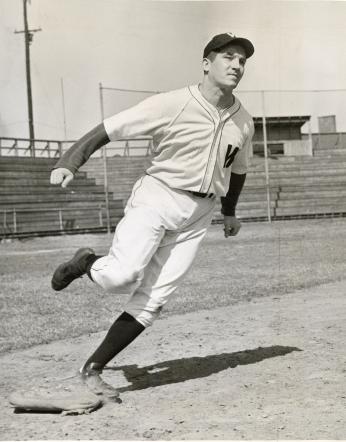
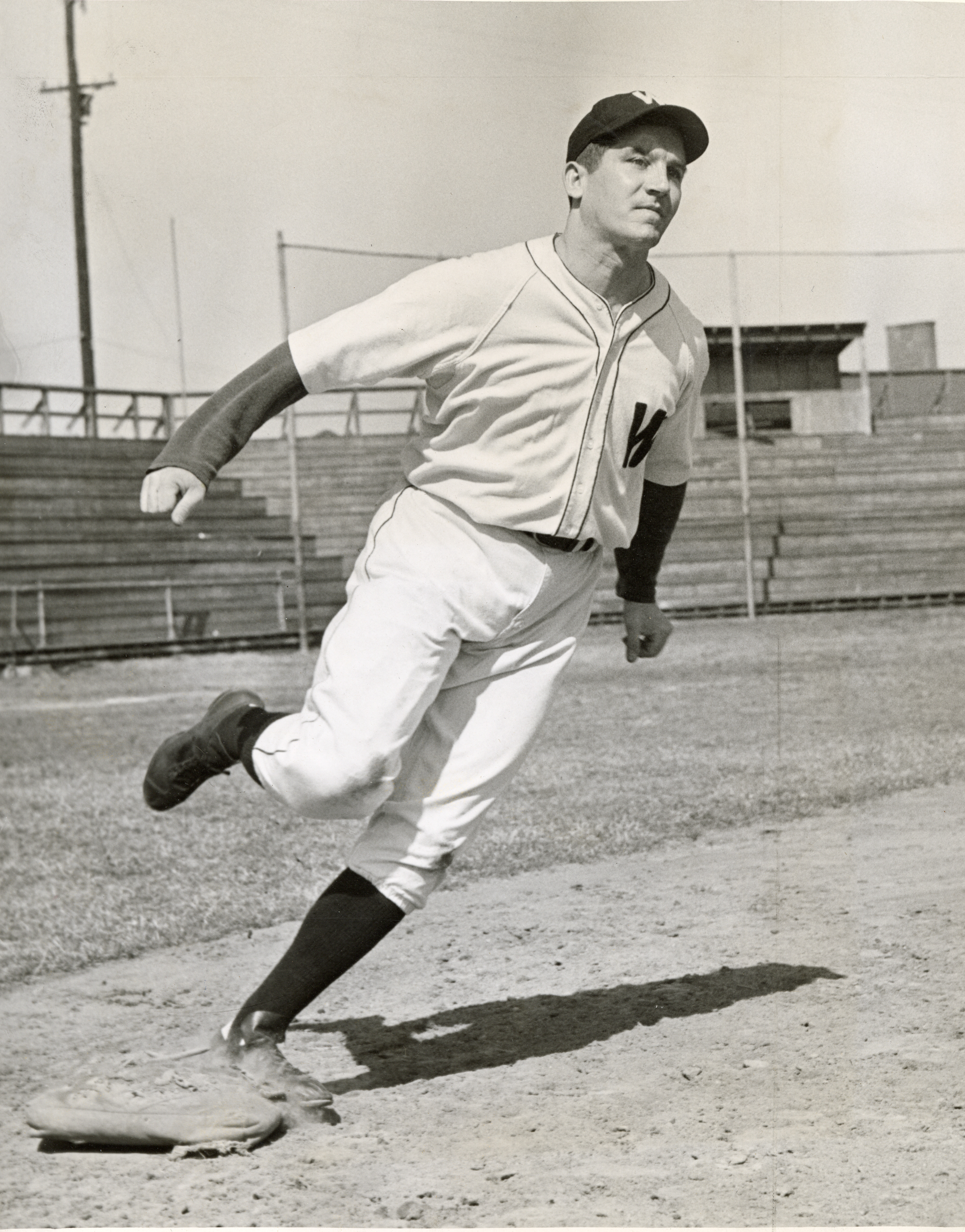
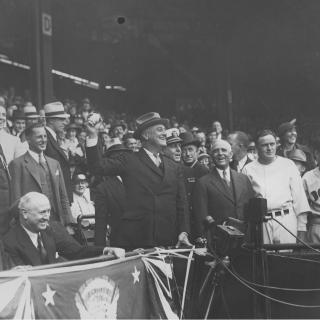
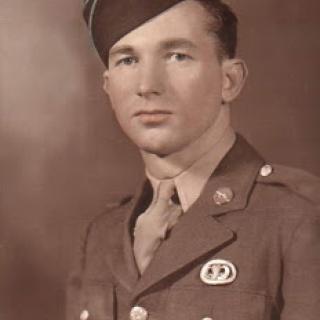
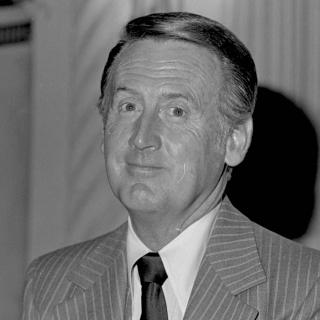
![Sketch of the mythical fuan by Pearson Scott Foresman. [Source: Wikipedia]](/sites/default/files/styles/crop_320x320/public/2023-10/Goatman_Wikipedia_Faun_2_%28PSF%29.png?h=64a074ff&itok=C9Qh-PE1)












